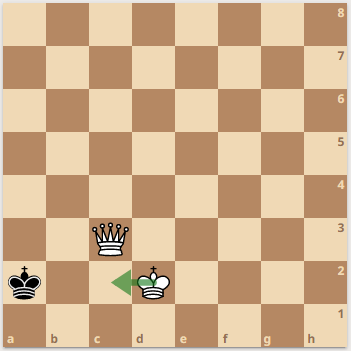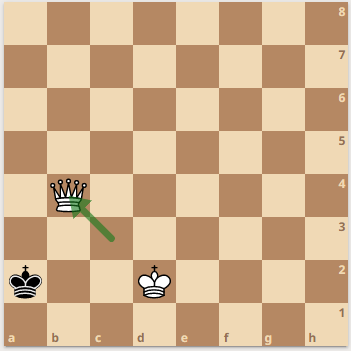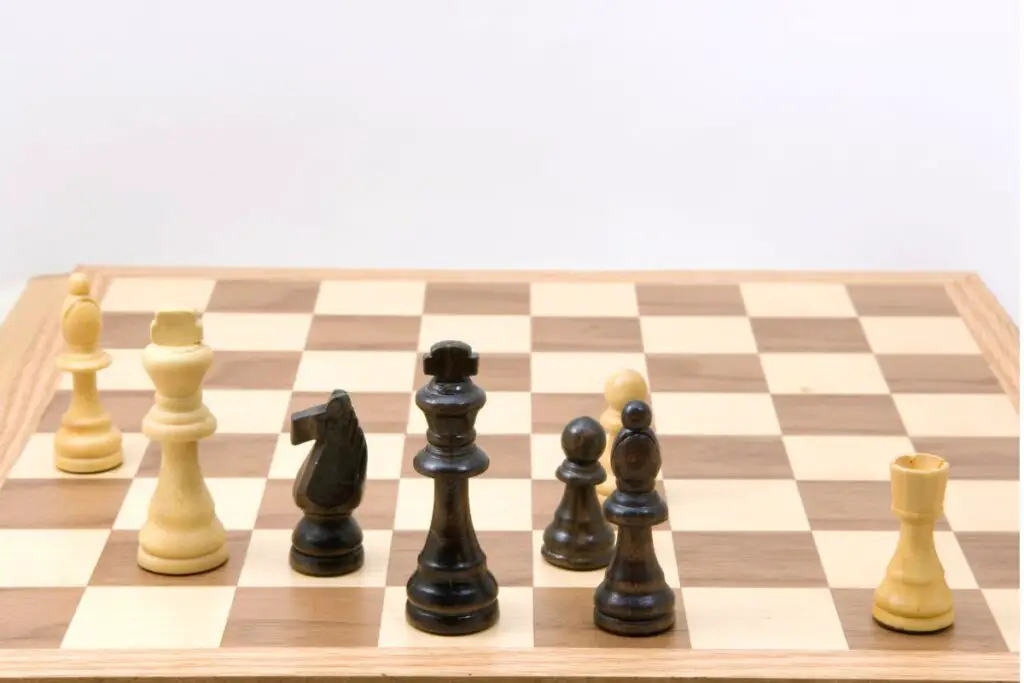One of the most intriguing aspects of chess is the concept of a draw by stalemate. Stalemate is a unique situation in which a player is not in check, but has no legal moves available, resulting in a draw rather than a win or loss.
While stalemate can be a frustrating outcome for players, it is an important aspect of the game that adds an additional layer of strategy.
In this article, we will explore the concept of a draw by stalemate in chess, including what it is, how it occurs, and strategies for avoiding it.
What Is Draw By Stalemate In Chess?
In chess, a stalemate occurs when a player is not in check but has no legal moves available to make. This situation results in a draw, and the game ends immediately with no winner declared.
Stalemate is a common tactic used by players who are losing and wish to salvage a draw. It can also occur unintentionally if a player is not careful in their movements.
It’s important to note that stalemate is different from a checkmate, which is a winning position for the attacking player.
In a stalemate, the opposing king is not under attack but cannot make any legal moves. A checkmate, on the other hand, is a winning position for the attacking player where the opposing king is under attack and has no legal moves to make.
Stalemate Example

In the position above, the game ends in a stalemate after the move King c2. The black king on a2 has no legal squares to move. Instead of Kc2, white should have made a move with his queen that will allow black access to at least 1 square on the chess board while setting up checkmate. Qb4 would have been a better move followed by Kc2 and then checkmate via Qb2#.
Qb4 Staves off stalemate

How To Avoid Stalemate?
Stalemate is a common tactic used in chess, and it can be frustrating to inadvertently draw a game that you could have won. Here are some tips to avoid stalemate and increase your chances of winning:
Be aware of the board
Always be aware of the pieces on the board and their potential moves. Avoid moving your pieces into a position that will allow your opponent to stalemate the game.
Keep your opponent’s king active
Keep your opponent’s king active and avoid getting it trapped in a corner. If your opponent’s king has room to move, you will have more options to avoid stalemate.
Don’t rush to checkmate
Be careful not to rush towards a checkmate too quickly. If you overcommit your pieces to an attack, you may end up putting yourself in a position where a stalemate is possible.
Use zugzwang
Zugzwang is a position in chess where the player who has to move is at a disadvantage. By placing your opponent in zugzwang, you can force them into a position where they have to make a move that will ultimately lead to their defeat rather than stalemate.
By keeping these tips in mind and being aware of the board, you can increase your chances of winning and avoid the frustration of a stalemate.
Why Is Stalemate A Draw?
Stalemate is considered a draw in chess because the player whose turn it is to move has no legal moves available, and their king is not in check.
Since the rules of chess state that a player must move their king out of check, or move a piece to block the attack on their king, the player cannot make a legal move and the game cannot continue.
Stalemate is not a win for either player because the player whose turn it is to move has effectively lost the game by not being able to make a legal move, but the opponent has not succeeded in delivering checkmate. Therefore, the game ends in a draw.
The rule that stalemate is a draw adds an additional strategic element to the game, as players must be careful not to accidentally stalemate their opponent, especially when they have a winning position.
What Is A Stalemate In War?
In the context of war, a stalemate refers to a situation in which neither side is able to gain a significant advantage over the other, and the conflict becomes deadlocked. This can occur when both sides are evenly matched in terms of resources, technology, and tactics, or when one side is able to defend against the other’s attacks without being able to mount a successful offensive.
A stalemate in war can be frustrating for both sides, as it prolongs the conflict and can result in high casualties without any clear path towards victory. It can also lead to a situation in which both sides become entrenched in their positions, creating a static front line that is difficult to breach.
Stalemates in war often occur in situations where the terrain favors the defender, such as in mountainous or heavily forested areas. They can also result from a failure to adapt to changing circumstances, such as when a military strategy becomes outdated or ineffective.
In order to break a stalemate, a side must find a way to gain an advantage over their opponent, either by developing new tactics or technologies, or by exploiting weaknesses in their opponent’s defenses.
Alternatively, a stalemate may be broken through negotiation or diplomacy, with both sides agreeing to a ceasefire or peace treaty.
Is Stalemate Common?
Stalemate is a relatively common occurrence in chess, particularly in games played at the beginner or intermediate levels. According to some estimates, stalemate occurs in around 4-5% of all chess games.
Stalemate is more likely to occur in games where one player is clearly winning, as the player in the weaker position may be more likely to make moves that avoid being checkmated, but ultimately result in a stalemate.
At the highest levels of chess, stalemate is less common, as players are less likely to make mistakes that result in a stalemate. However, even at the highest levels of play, stalemate can still occur, particularly in complex positions where both players are low on time.
Overall, while stalemate is not the most common outcome in a game of chess, it is still a relatively frequent occurrence, and it is important for players to be aware of the stalemate rule and how to avoid it in order to play effectively.
Final Thoughts
In conclusion, a draw by stalemate is a unique situation in the game of chess where a player has no legal moves available, and is not in check, resulting in a draw.
By understanding the rules and strategies for avoiding stalemate, players can improve their overall gameplay and increase their chances of success on the board.
With its rich history and complex strategies, chess remains a beloved pastime for players of all skill levels, and the concept of a draw by stalemate is just one of the many fascinating aspects that make it a timeless game.


